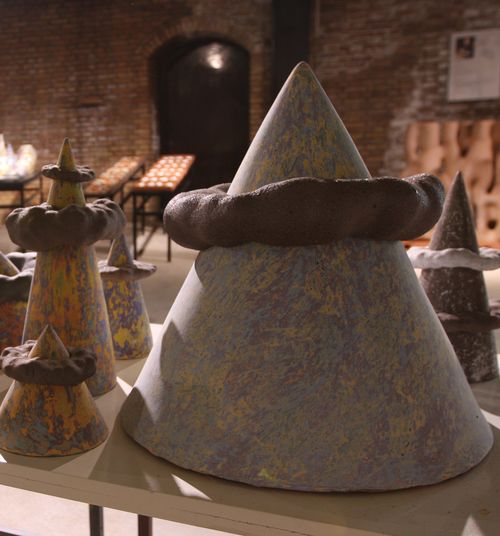“United by clay”
Museum of contemporary Ukrainian ceramics opens in Fuping, China
The exposition is opened in the East European pavilion of the International Museum of Ceramic Art. In total, the pavilions of the museum contain works of contemporary artists from more than 20 countries. The permanent exposition by Ukrainian authors is the result of the Ceramic Art Residency Program of the FuLe International Ceramic Art Museums (FLICAM). Five Ukrainian artists took part in the project: Yurii Musatov, Marta Berezhnenko, Liza Portnova, Andrii Kyrychenko, and Natalia Zuban. In the month spent in residence they have created more than 70 items.
“In China I kept working on the theme of mountain peaks and clouds and also embarked on the theme of Chinese mythical creatures, namely dragons. I think I will continue working with dragons at home,” said Musatov sharing his impressions of the residence. The names of his works, which are exhibited at the Chinese museum, speak for themselves: Hory. Vyhliad z vysoty (“Mountains. A Bird’s Eye View”), Terakotovi hory (“Terracotta Mountains”), Brama (“The Gate”), Hnizdo terakotovoho drakona (“The Nest of the Terracotta Dragon”), Sviashchenni hory (“Sacred Mountains”). The artist says they were all inspired by what he had seen, heard, and felt in China.
Musatov learned of Fupin from a colleague from Moscow a couple of years ago. In 2015, during the Macsabal international symposium in Ankara, Turkey, he got acquainted with Lu Chan from China, who happened to be a friend of I-Chi Hsu, the curator of the Fuping museum. She asked if Musatov would like to go to China for residence. “A month later, at another international symposium in Beijing I learned that Mr. I-Chi Hsu was present at the opening of the exhibit by its participants in the Forbidden City in Beijing,” recalls Musatov. “When I asked Mutlu Bashkia, curator of the Macsabal symposiums in Ankara and Beijing, if I might meet with Mr. I-Chi Hsu to discuss the terms of the residence, it turned out that he had already left for Fuping. Then I and Mutlu decided to gather a group of half a dozen Ukrainian artists for a residence there. At that time Mutlu was already working on the museums of Turkish and Croatian ceramics in Fuping. Providence would have it that there appeared also a Ukrainian one.”
At the International Museum of Ceramic Art, the East European pavilion with its newly created Ukrainian and Turkish expositions is Musatov’s favorite. “Also Americans, who occupy a separate big building at the museum, are very interesting. All in all, all artists are interesting and original. And all are united by clay,” adds the artists. “I would be happy if Ukrainian artists went to Fuping next year. We were pioneers, it was difficult but exciting. We have done our bit, now time is ripe to negotiate the future residents. I hope everything will come off.”
Newspaper output №:
№66, (2016)Section
Culture





